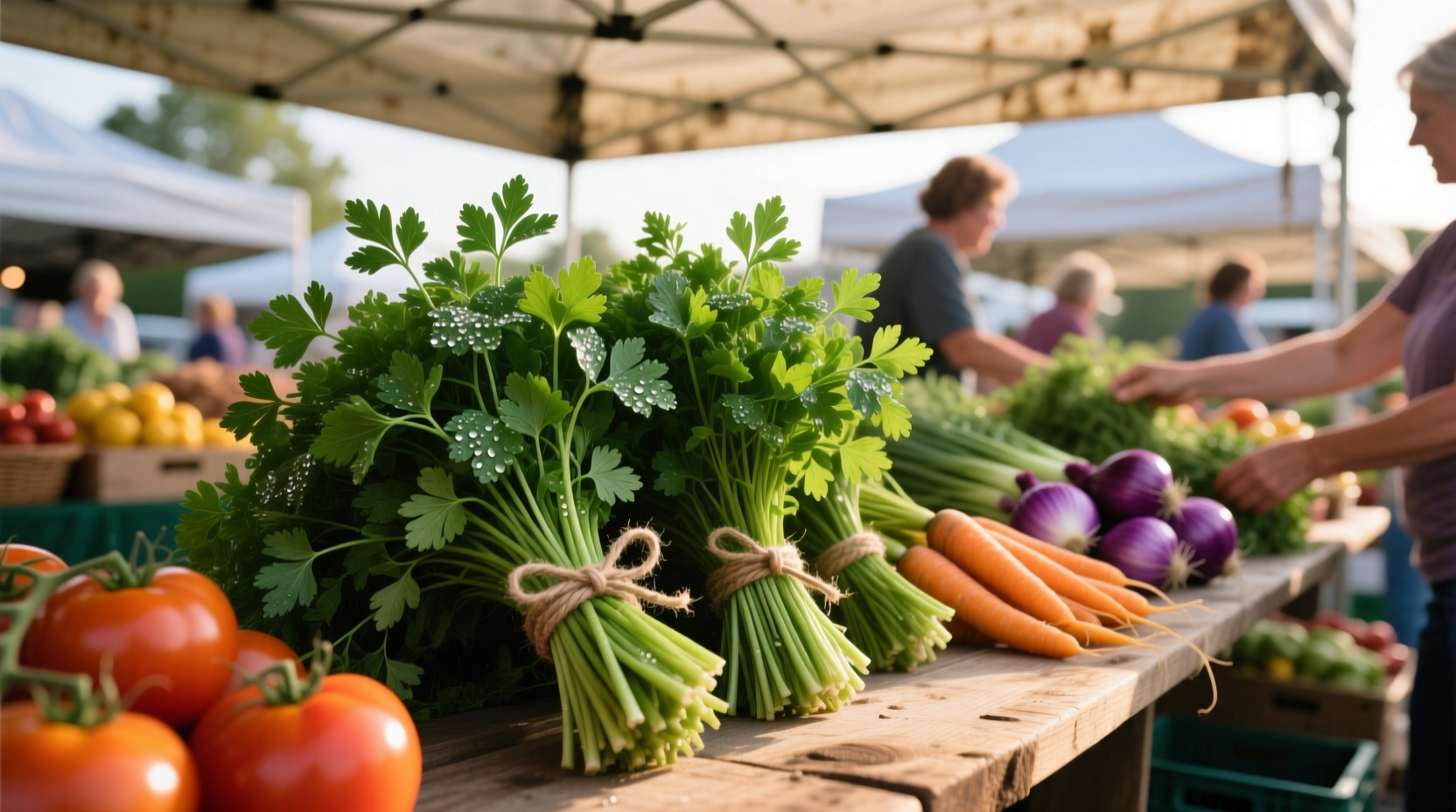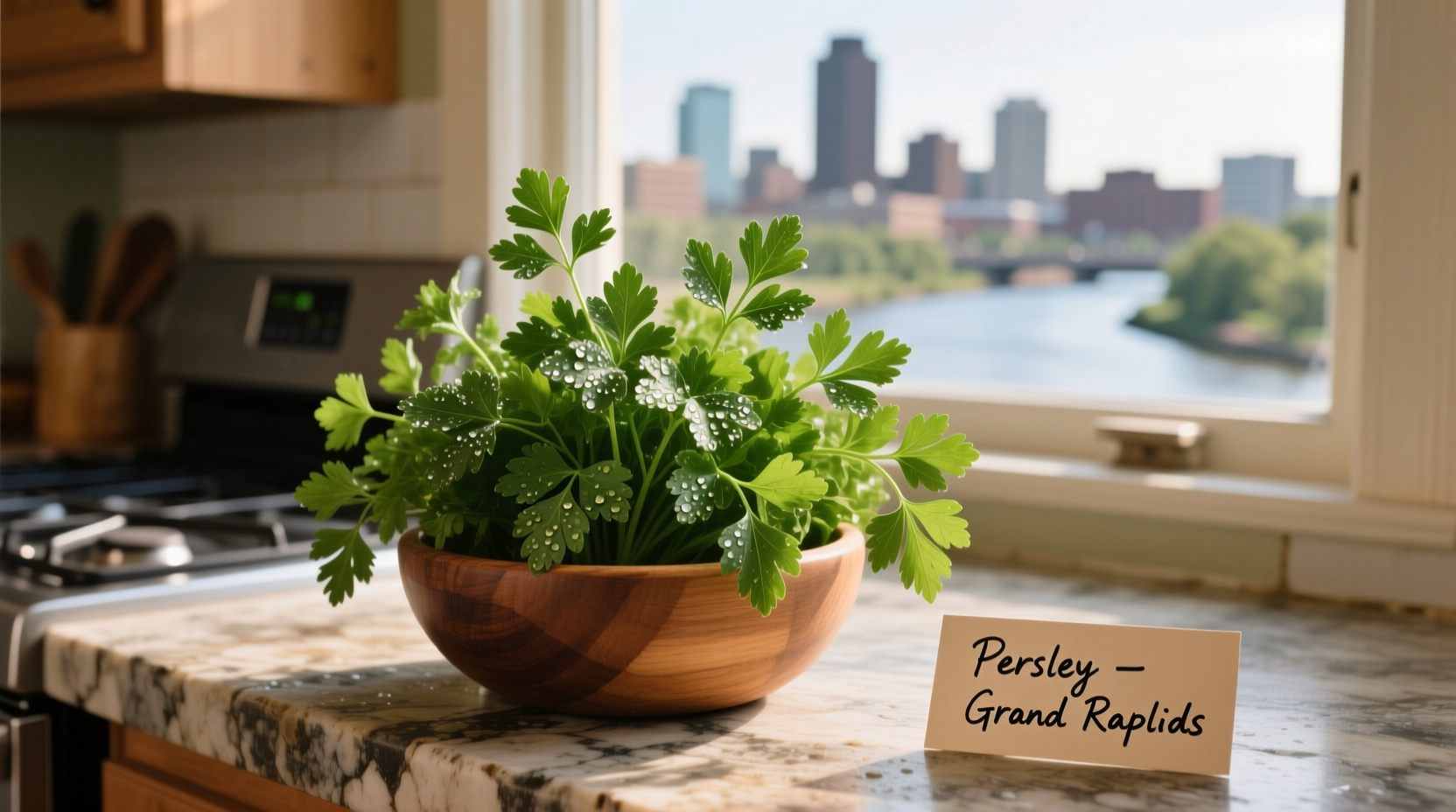Discover where to find the freshest parsley in West Michigan with this comprehensive guide. Whether you're a home cook seeking vibrant garnishes or a chef requiring premium culinary herbs, understanding Grand Rapids' parsley landscape ensures you'll always have access to this essential herb at its peak.
Where to Source Fresh Parsley in Grand Rapids
Grand Rapids offers multiple pathways to obtain high-quality parsley, each with distinct advantages depending on your needs and timing. Understanding these options helps you make informed decisions based on freshness, price, and convenience.
Farmers Markets: Peak Season Freshness
Grand Rapids' vibrant farmers market scene provides the freshest local parsley during growing season. The Tuesday Market at Calder Plaza operates May-October and features multiple vendors growing Italian and curly parsley varieties specifically for culinary use. Kent County Market in Grand Rapids Township offers year-round access with seasonal peaks from June-September.
According to the Kent County Market seasonal guide, parsley typically appears in late spring and remains available through first frost. Local growers like Green Well Farm and Good Sweetness Farm prioritize quick harvest-to-market times, often delivering parsley within 24 hours of picking.
Grocery Retailers: Year-Round Availability
For consistent year-round access, Grand Rapids grocery stores provide reliable parsley options:
- Forest Hills Foods - Features locally grown parsley during season and maintains strict freshness standards
- Meijer - Carries Michigan-grown parsley when available, with clear origin labeling
- Whole Foods Market - Sources from regional organic farms during growing season
- Adam's Family Market - Known for premium herb selection with frequent restocking
Local Farms: Direct-from-Source Options
Several West Michigan farms welcome direct purchases:
- Green Well Farm (Byron Center) - Offers u-pick parsley during summer months
- Good Sweetness Farm (Cedar Springs) - Sells at markets and through CSA programs
- Plum Street Market Garden (Grand Rapids) - Urban farm with regular parsley harvests

Seasonal Availability Timeline
Understanding Michigan's growing calendar helps optimize your parsley sourcing strategy. The state's USDA Plant Hardiness Zone 5b-6a classification creates specific growing patterns for this cool-weather herb.
| Season | Availability | Best Source | Quality Indicator |
|---|---|---|---|
| Spring (May-June) | Moderate | Farmers markets | Bright green, firm stems |
| Summer (July-August) | Peak | Local farms | Vibrant color, crisp texture |
| Fall (Sept-Oct) | Good | Farmers markets | Deep green, no yellowing |
| Winter (Nov-Apr) | Limited | Grocery stores | Firm stems, no wilting |
This seasonal pattern aligns with Michigan State University Extension's seasonal produce recommendations, which note that parsley thrives in Michigan's moderate spring and fall temperatures but struggles during extreme summer heat.
Selecting Quality Parsley: What to Look For
Not all parsley is created equal. When selecting parsley in Grand Rapids, examine these critical quality indicators:
- Color - Vibrant medium to dark green (avoid yellow or brown spots)
- Texture - Crisp, firm stems that snap when bent
- Smell - Fresh, clean herbal aroma without mustiness
- Moisture - Slightly damp but not wet or slimy
Local chefs recommend avoiding parsley with yellowing leaves or limp stems, which indicate age and reduced flavor compounds. The freshest parsley will have a slight bounce when gently pressed.
Contextual Considerations for Parsley Selection
Your ideal parsley source depends on specific usage requirements and timing constraints:
- For immediate use - Farmers markets provide the freshest options during season
- For meal prep - Grocery stores offer consistent quality year-round
- For special occasions - Local farms provide premium quality with advance notice
- For large quantities - Contact farms directly for bulk orders
During winter months, when local field production ceases, greenhouse-grown Michigan parsley becomes available through select retailers. The Michigan Farm Bureau notes that controlled environment agriculture has extended local herb availability by 2-3 months compared to traditional field production.
Preserving Parsley Freshness
Maximize your parsley investment with these storage techniques:
- Trim stem ends and place in water (like flowers) in refrigerator
- Wrap in slightly damp paper towel inside airtight container
- Freeze chopped parsley in olive oil for cooking applications
- Use within 5-7 days for optimal flavor and nutritional value
Local chefs in Grand Rapids often create parsley pesto during peak season to preserve summer freshness throughout the year. This traditional preservation method maintains flavor compounds better than simple freezing.
West Michigan Parsley in Culinary Applications
Grand Rapids' culinary scene features parsley prominently in regional dishes. Local restaurants often incorporate Michigan-grown parsley into:
- Whitefish preparations with lemon and parsley
- Great Lakes-inspired herb sauces
- Seasonal vegetable medleys
- Traditional Dutch-influenced meat dishes
When cooking with locally sourced parsley, add it late in the cooking process to preserve its delicate flavor compounds. Italian parsley generally offers stronger flavor than curly varieties, making it preferable for cooked dishes.











 浙公网安备
33010002000092号
浙公网安备
33010002000092号 浙B2-20120091-4
浙B2-20120091-4